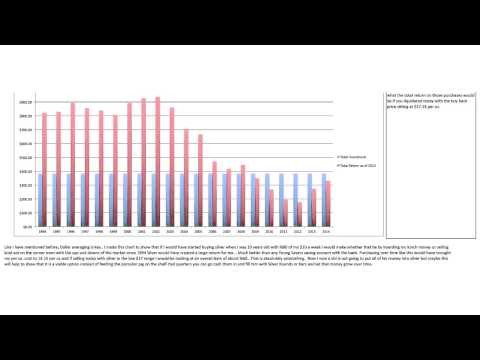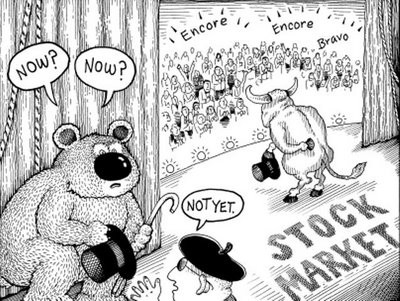Fight The Good DollarCost Averaging Fight
Post on: 12 Май, 2015 No Comment

Dollar-cost averaging (DCA), or regular payments into an investment fund over a long period of time, is an extremely controversial and hotly debated approach to investing. This applies both to practitioners and theoreticians. Internet discussion groups too, contain lively debates on the subject, with a fascinating mixture of beliefs, prejudices, opinions, and facts and statistics. So, what are investors to believe and do? Read on to learn both sides of the argument.
The Good Side: DCA Makes Cents
The idea of DCA is intuitively appealing and makes a lot of sense. In a steadily rising or volatile market, investors buy in at a low average price over time. Most appealing of all, in a falling market, the same payments will purchase a larger number of units. All in all, regular payments protect investors to some degree from market volatility.
Certainly, one way or the other, regular saving is a good thing. This is the only way that many people can save and the discipline pays off in that sense alone. Furthermore, DCA allows you to do the opposite of another very controversial element of investment — market timing. If an investor were considering investing a lump sum from an inheritance, for example, and the market looked overheated or precarious for any reason, it may be prudent to drip feed into stocks.
Also, a great advantage of DCA, says George Smyth of the MotleyFool.com ( Blind Dollar Cost Averaging . March, 2000), is that the gentle moves into the stock market mean you can place yourself at the proper comfort level so you can certainly sleep better at night . And indeed, precisely when Smyth wrote these words, a lump sum would have collided head on with the great dotcom bear market.
Even the otherwise skeptical Richard Williams and Peter Bacon, writing in the Financial Planning Association Journal ( Lump Sum Beats Dollar-Cost Averaging . June 2004), agree that DCA does really reduce risk and avoid the possibility of investing all the money at a market high . (To read more on this topic, see Dollar-Cost Averaging Pays .)
The Bad Side: No Guarantees
The above advantages undoubtedly prevail up to a point, but many experts on both sides of the Atlantic warn against regarding the approach as a cure-all. They say that it by no means guarantees better returns than lump-sum investments. Furthermore, they stress that investors are not always protected effectively against volatile and falling markets.
After all, investors who started their regular payments in 2000 had a pretty bad time until 2003. They would have kicked off with a downhill run and the odds are they would eventually have bailed out in panic at some point in the dotcom bear market. Some observers point out that in a long sideways or downwards market, DCA does not differ much from a buy-and-hold strategy. Even more skeptical commentators argue that at its worst, DCA is little more than a marketing trick to convince people to hand over money regularly, ensuring trading commissions.
The Ugly Side: Risk/Return Controversy
What evidence is there on the returns from DCA? Williams and Bacon make their position very clear, saying: Even without dividends, annuity investments into the S&P 500 and other indexes generally fall short of an investment up front. This statement is based on a methodologically sound long-term study over 65 years. Their historical findings are strongly in favor of investing a lump-sum immediately, provided, of course that you have a lump sum to invest.
Also writing in the FPA Journal. Robert Atra and Thomas Mann ( Dollar-Cost Averaging and Seasonality: Some International Evidence, July 2001) sum up what is surely the essence of the matter: The results (of various studies) suggest that DCA is neither as effective as the personal finance literature claims, nor as sub-optimal as the academic literature claims. The popular investment press tends to claim that DCA reduces risk and enhances return. This would be wonderful, but the world of money is full of tradeoffs, and it would seem more likely to be one benefit or the other, rather than both. DCA does tend to reduce risk, but frequently at the expense of return. (Keep reading about the risk-return tradeoff in Determining Risk And The Risk Pyramid .)
Dollar-cost averaging is not an investment technique for all seasons. If you get the season right, you can win both ways, but, as we know, not only does winter inevitably arrive, but the summertime blues can intervene long before that.
DCA Vs. Lump-Sum Investing

Both lump-sum investing and DCA have their appropriate time and place. The research shows that lump-sum investing pays off about 66% of the time, which is a long way from all the time. It certainly makes sense to look carefully at the current market conditions. If you hit that bad 33% in lumpy style, you can lose a lot of money.
On the other hand, many DCA users fail to monitor their investments after they start. The mere fact that you are investing in small pieces does not mean that you don ‘ t need to rebalance your portfolio, watch for changes in fund managers or in the economic environment, etc. So part of the problem is not DCA itself, but the fact that other investment issues still have to be taken care of. Indeed, one broker refers to the no-brainer DCA . the equivalent of Smyth ‘ s blind DCA .
Conclusions
DCA does not provide any real kind of guaranteed return and/or risk reduction. And it certainly does not work well in all market situations. Furthermore, research in the area indicates that lump-sum investing tends to perform better over the longer term.
Nonetheless, DCA is far less nerve-wracking than a lump-sum investment, and if there is a major bear market around the corner, it can really pay off. In some situations, it is an ideal way of controlling both risk and stress.
You can also treat DCA as just one of the strategies that you use in your overall portfolio (in other words, it makes sense to use it as a form of diversification ), but as with those other strategies, you still need to monitor, manage and rebalance your DCA investments. (Read more about diversification and balance in Risk And Diversification and Rebalance Your Portfolio To Stay On Track .)
Finally, regular investing is a lot better than no investing at all. If the choice is between putting away $50 a month or treating yourself to an extra night on the town, it is clear which option will see you through your old age.














